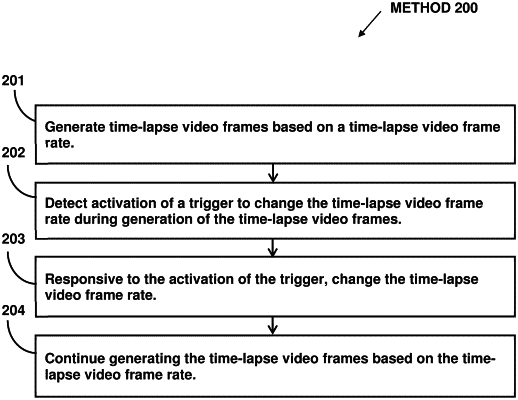| CPC H04N 1/2133 (2013.01) [H04N 23/61 (2023.01); H04N 23/62 (2023.01); H04N 23/631 (2023.01)] | 20 Claims |

|
1. A system for generating time-lapse video frames using a dynamic time-lapse video frame rate, the system comprising:
one or more physical processors configured by machine-readable instructions to:
store visual content captured by an image capture device in a buffer for use in generating the time-lapse video frames, the visual content captured based on a value of a capture frame rate;
generate the time-lapse video frames based on a first value of the dynamic time-lapse video frame rate, the dynamic time-lapse video frame rate defining a rate at which the time-lapse video frames are generated from the visual content stored in the buffer, the first value defining a first rate at which the time-lapse video frames are generated from the visual content stored in the buffer, the first value of the dynamic time-lapse video frame rate being different from the value of the capture frame rate;
detect activation of a trigger to change the dynamic time-lapse video frame rate during generation of the time-lapse video frames;
responsive to the activation of the trigger, change the dynamic time-lapse video frame rate in generating the time-lapse video frames from the first value to a second value defining a second rate different from the first rate, wherein responsive to the activation of the trigger, the dynamic time-lapse video frame rate alternates between the first value and the second value; and
continue generating the time-lapse video frames from the visual content stored in the buffer based on the dynamic time-lapse video frame rate such that the time-lapse video frames include a first set of time-lapse video frames generated based on the first rate and a second set of time-lapse video frames generated based on the second rate.
|